练习 Exercises
1 分角色朗读课文 Role-play the dialogs.
2 根据课文内容回答问题 Answer the questions based on the dialogs.
- 这本书是谁写的?Zhè běn shū shì shéi xiě de?
- 早上的电话是谁接的?Zǎoshang de diànhuà shì shéi jiē de?
- 他是什么时候开始踢足球的?Tā shì shénme shíhou kāishǐ tī zúqiú de?
- 他在那儿工作多长时间了?Tā zài nàr gōngzuò duō cháng shíjiān le?
- 工作是谁帮他介绍的?Gōngzuò shì shéi bāng tā jièshào de?
3 用本课新学的语言点和词语描述图片
Describe the pictures using the newly-learned language points and words.
Wǒ zài zuò fàn ne, shì Mǎdīng ______ de diànhuà.
我 在 做 饭 呢,是 马 丁 ______ 的 电 话。
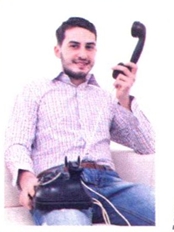
Zhège gōngzuò shì Wáng Fāng bāng wǒ ______ de, wǒ xiǎng qǐng tā chī fàn.
这 个 工 作 是 王 方 帮 我 ______ 的,我 想 请 她 吃 饭。
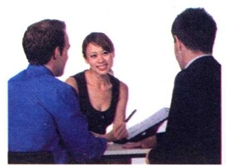
Zhè běn shū shì wǒ xiě de, wǒ shì èrshí suì ______ kāishǐ xiě shū de.
这 本 书 是 我 写 的,我 是 二 十 岁 ______ 开 始 写 书 的。
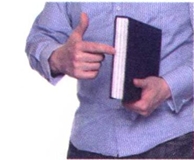
Wǒ shì liù suì kāishǐ dǎ lánqiú de, wǒ ______ xǐhuan dǎ lánqiú.
我 是 六 岁 开 始 打 篮 球 的,我 ______ 喜 欢 打 篮 球。
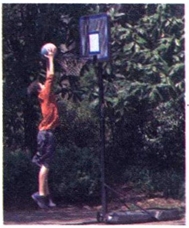
语音 ■ 句子的语法重音(1) Syntactic Stress in a Sentence (1)
Pronunciation
在不表示特殊的思想和感情的情况下,根据语法结构的特点,把句子的某些部分重读的,叫语法重音。语法重音的位置比较固定,常见的规律是:谓语重读,补语重读,定语重读,状语重读。
Some parts of a sentence may be stressed just because of their syntactic features, without conveying any special idea or mood. This kind of stress is called syntactic stress, which often appears at fixed positions in a sentence, following common rules such as stressing the predicate, complement and attributive and adverbial modifiers.
(1)谓语重读 Stressing the Predicate
Wǒ xuéxí Hànyǔ.
我 学习 汉语。
Tā gēge shì yī míng yīshēng.
他哥哥是 一名 医生。
Wáng xiǎojiě mǎi le jǐ jiàn yīfu.
王 小姐 买 了几件衣服。
(2)补语重读 Stressing the Complement
Tāmen gāoxìng de tiàole qǐlái.
他们 高兴 得 跳了起来。
Dàwèi dǎ lánqiú dǎ de fēicháng hǎo.
大卫 打篮球 打得 非常 好。
Jīntiān de yángròu zuò de hěn hǎochī.
今天 的 羊肉 做得 很 好吃。
汉字 1 汉字的笔画(10):𠄌、㇉
Characters
Strokes of Chinese Characters (10):𠄌, ㇉
| 笔画名称 Stroke | 运笔方向 Direction | 例字 Example Characters |
|---|---|---|
| 𠄌 shùtí Vertical-Rising |  |
长 cháng long 民 mín people |
| ㇉ shùzhézhé gōu Vertical-Double-Turning-Hook | 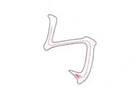 |
马 mǎ horse 写 xiě to write |
2 认识独体字 Single-Component Characters
(1)“两”
字形像双套马车上架在马脖子上的器具和一对马鞍,意思是 “二”、“双”。
“两” originally looked like a yoke fastened across the necks of the horses and a pair of saddles of a two-horse carriage. It means “two” or “double”.
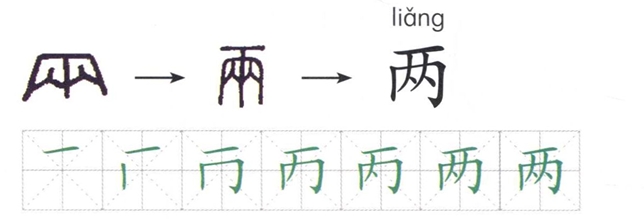
(2)“乐”
繁体(樂)本义为乐器,又指 “音乐”(读 yuè),后来引申为 “喜悦”、“高兴”(读 lè)。
The complex form of “乐” (yuè), 樂, originally referred to musical instruments or “music” (pronounced “yuè”). Now it also means “joyous” and “happy”(pronounced “lè”).

(3)“长”
本义是拄拐杖的老人,现在除表示 “年纪大的”(读 zhǎng)以外,还表示两段之间的距离大(读 cháng)。
“长” originally referred to an old person holding a walking stick. Now it means “old” (pronounced “zhǎng”) and also “a long distance between two sections” (pronounced “cháng”).

3 汉字偏旁 “纟” 和 “忄” Chinese Radicals:“纟”and“忄”
| 偏旁 Radical | 解释 Explanation | 例字 Example Characters |
|---|---|---|
| 纟 | 绞丝旁,一般和丝有关系。 The radical “纟” is usually related to silk. |
给 gěi to give 结 jié to tie, to knot |
| 忄 | 竖心旁,一般和人的心理有关系。 The radical “忄”, called “standing heart”, is usually related to one’s mentality. |
忙 máng busy 快 kuài quick, fast |
运用 Application
1 双人活动 Pair Work
两人一组,对同学桌子上的东西进行提问。
Work in pairs and ask questions about the items on your partner’s desk.
Zhège bǐ shì nǐ mǎi de ma?
例如:A:这个 笔是你 买 的吗?
Bú shì, shì wǒ māma mǎi de.
B:不 是,是我 妈妈 买 的。
Zhège Hànzì shì nǐ xiě de ma?
A:这个 汉字 是你 写 的吗?
Duì, shì wǒ xiě de.
B:对,是我 写 的。
2 小组活动 Group Work
3 – 4人一组,各带一张生日晚会的照片(类似下图),根据图片上的信息,说一说这个生日晚会是怎么准备的。
Work in groups of 3 – 4. Each group member brings a photo of a birthday party (like the photo below). Talk about how the birthday party was prepared based on the photo.

Zhège cài shì shéi zuò de?
例如:A:这个 菜 是谁 做 的?
Shì māma zuò de.
B:是 妈妈 做 的。
Píngguǒ shì nǐ mǎi de ma?
A:苹果 是你 买 的吗?
Bú shì wǒ mǎi de.
B:不 是 我 买 的。

Comments